
Vol. 6, 2020
A new decade
for social changes
www.techniumscience.com
9 772668 779000
ISSN 2668-7798

Curriculum interdependence in the preparation of the
engineering and economic and financial technique of the
future commercial marine officers
Carmen Elena Coca
Tomis University of Constanta, Romania
zelesneacarmen@yahoo.com
Abstract. The education and training of the future merchant marine officers have reached a
high-quality international level, recognized both by the beneficiaries and by the bodies of
evaluation of the activity of the institutions of higher education of the navy. The training of
merchant marine officers involves knowledge and skills in the technical field and other
complementary fields. The current challenges related to safety, security and economic
efficiency lead to the consolidation of the level of education and training of merchant marine
officers, through the interdependence and diversification of the curricula in the world economy
of shipping, finance of the maritime industry and the specialized labour market.
Keywords. merchant marine officer, economic and financial curricula
1. Introduction
Maritime transport has an essential role to play in the movement of goods, both
quantitatively and operationally, a role conferred by aspects such as relatively low costs,
concerning the large volume of goods that can be transported; the complex and diversified
character of trade; increasing the number of participants in these exchanges.
The three essential elements underlying the definition of maritime transport are the
following: goods, characterized by a high volume and a high value; ships, as a means of
transport incorporating a high level of technicality and investment; ports, as transhipment
hubs, as well as operating facilities within them, to which are added the crews, which require
a high level of professional training, both technical and economic.
The commercial ship represents an economic unit destined for freight and / or persons.
The transport is carried out based on a contract, of different forms and clauses, depending on
numerous factors: type of goods, economic, political conditions, geographical area, transport
relations, etc. Thus, the conditions and clauses in which a certain transport is carried out are
not identical to those of the others, a voyage does not resemble the previous ones, even if it is
carried out by the same ship.
The importance of maritime transport has led to the development of broad
international cooperation, under the aegis of the United Nations, to ensure: the safety of
human life and ships at sea; avoiding accidents and organizing maritime assistance and
rescue; preventing pollution of the environment in general and the marine environment in
180
Technium Social Sciences Journal
Vol. 6, 180-187, April 2020
ISSN: 2668-7798
www.techniumscience.com

particular; unification of legislation and methodology in maritime transport; insurance of
goods, ships and persons; the protection of shipowners and owners of goods; establishing, for
maritime trade, an adequate legal, economic, equitable, sustainable and operational
framework, based on international cooperation, guaranteeing its functionality, equality in
rights and obligations of partners, conditions in which the principle of mutual advantage can
ensure a fair return within the international community.
Thus, it can be stated that maritime transport is a very complex economic activity,
having a national and international character, which must be thought and carried out both
according to needs and to ensure profitability.
The main function of maritime transport is to ensure the connection between
production and consumption and is characterized by two essential features, of economic
nature: economic efficiency, in the sense of satisfying defined requirements; profitability, as
an essential condition of a broad economic activity, which involves costs of the transport
itself and costs of the related operations.
Currently, world trade is around 90% by the international shipping industry. Without
international shipping, importing and exporting the necessary goods to the modern world
would not be possible. Sea trade, with its ups and downs, continues to grow, bringing benefits
to consumers around the world through its competitive freight costs. As a consequence of the
increasing efficiency of maritime transport, the degree of economic liberalization has also
increased, and the prospect of growth, after the recent global crisis (which has not yet been
exhausted), continues to manifest itself, as a result of the growing trend of the world
economy.
Today there are over 90.000 operational commercial vessels, which carry all kinds of
goods by sea. The world fleet is registered in over 150 countries and comprises over one
million sailors, from almost all countries of the world.
Maritime transport is considered the safest and least aggressive environment. It is
appreciated that, almost uniquely, among industries that involve physical risk, the safety of all
operations in maritime transport is very well implemented. Shipping was among the first
industries that adopted safety standards recognized at international level and widely
implemented.
2. Data and methods
The analysis of the current situation and the evolution of the labour market in the
maritime field starts from the global economic situation mirrored in the situation and the
evolution of the maritime trade. The sources used are the reports and statistics of the UNO
and UNCTAD, as well as the specialized publications, among which we mention Review of
Maritime Transport.
The evolution of world maritime trade in recent years has been directly influenced by the
evolution of the world economy and therefore a synthetic analysis of the latter is required. For
analysis, we chose three groups of countries: developed, in transition and developing and
China compared to the evolution of the world economy.
Today, the merchant maritime ship is a floating plant that requires qualified
personnel, with a high professional and ethical level. The complexity of the ships, the
diversification of the types of ships and cargo, the special increase of the number of ships
have imposed firm and clear rules regarding the selection, preparation, hiring, promotion and
control of the training of the navigating personnel.
181
Technium Social Sciences Journal
Vol. 6, 180-187, April 2020
ISSN: 2668-7798
www.techniumscience.com

Knowing the laws that govern the international market for seafaring personnel is of
crucial importance for those who make the personnel policy at the international, national and
company level.
The approach of the international market for seafarers is strictly related to the safety of
navigation and the protection of the marine environment.
International shipping is mainly regulated by the International Maritime Organization, based
in London, a United Nations agency responsible for the safety of life at sea and the protection
of the marine environment. The International Labour Organization - ILO is also responsible
for developing the labour standards applicable to seafarers worldwide.
IMO has adopted a comprehensive framework of detailed technical regulations, in the form of
international conventions governing ship safety and the protection of the marine environment.
National governments, IMO components, are required to implement and enforce these
international standards and to ensure that vessels registered under their flag comply with these
rules.
3. Results
Today the share of world trade at sea is over 90% and provides over 1.5 million jobs
for seafarers (seafarer: any person employed and doing work aboard a ship to which the
provisions of the 2006 MLC Convention apply. The 2006 Convention MLC does not apply to
vessels that sail exclusively in inland and port waters or which are not engaged in ordinary
trade, fishing, recreational, military and auxiliary vessels. Thus, shipping is a truly
international industry: in today's global market there are ships of a certain nationality,
registered in other countries, than the one of origin, with officers and mixed crews from
different other countries of the world.
Worldwide, the number of seafarers serving commercial vessels engaged in
international voyages are estimated at 466.000 officers and 721.000 unpowered personnel,
with a total of 1.187.000 seafarers, plus personnel serving coastal and technical vessels.
The distribution of navigators by geographical regions is presented as follows (table. 1,
according to BIMCO 2010, graph 1 and 2):
Table 1
The region
Number and percentage
Officers (out of 1,000)
%
Crew (out of 1,000)
%
OECD
184
29.4
143
19.2
Eastern Europe
127
20.3
109
14.6
Africa / Latin
America
50
8.0
112
15.0
The Far East
184
29.5
275
36.7
India
80
12.8
108
14.5
Total countries
624
100%
747
100%
182
Technium Social Sciences Journal
Vol. 6, 180-187, April 2020
ISSN: 2668-7798
www.techniumscience.com

Graph 1 %/1.000 officers by regions
Graph 2 %/1.000 ratings by regions
Approximate 21% of the global market for seafarers is provided by seafarers from
the EU. Marine education is carried out at the university level. Russia, Ukraine, Bulgaria,
Romania and Croatia are included in this group of countries, with Russia having the highest
number of navigators. However, Croatia has the highest percentage of navigators in relation to
the population of the country (table 2).
Table 2.
Nr.crt.
The country
Population (mil.)
Total browsers (%)
1
Croaţia
4,3
0,47
2
Bulgaria
7,3
0,45
3
Romania
19,9
0,12
4
Ukraine
45,5
0,084
29.4
20.3
8
29.5
12.8
%/1,000 officers
OECD
Eastern Europe
Africa/Latin America
Far East
India
19.2
14.6
15
36.7
14.5
%/1,000 ratings
OECD
Eastern Europe
Africa/Latin America
Far East
India
183
Technium Social Sciences Journal
Vol. 6, 180-187, April 2020
ISSN: 2668-7798
www.techniumscience.com

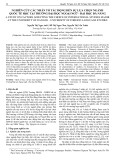
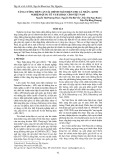
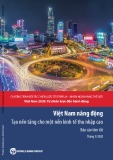





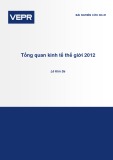

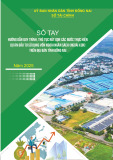
![20 câu hỏi Quản lý dự án phần mềm có đáp án [mới nhất]](https://cdn.tailieu.vn/images/document/thumbnail/2025/20251003/hieu2004haha@gmail.com/135x160/78791759734259.jpg)
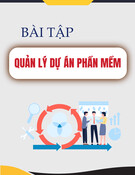

![Tài liệu Quản lý dự án: Kiến thức nền tảng toàn diện [chuẩn SEO]](https://cdn.tailieu.vn/images/document/thumbnail/2025/20250910/kimphuong1001/135x160/92631757496585.jpg)










